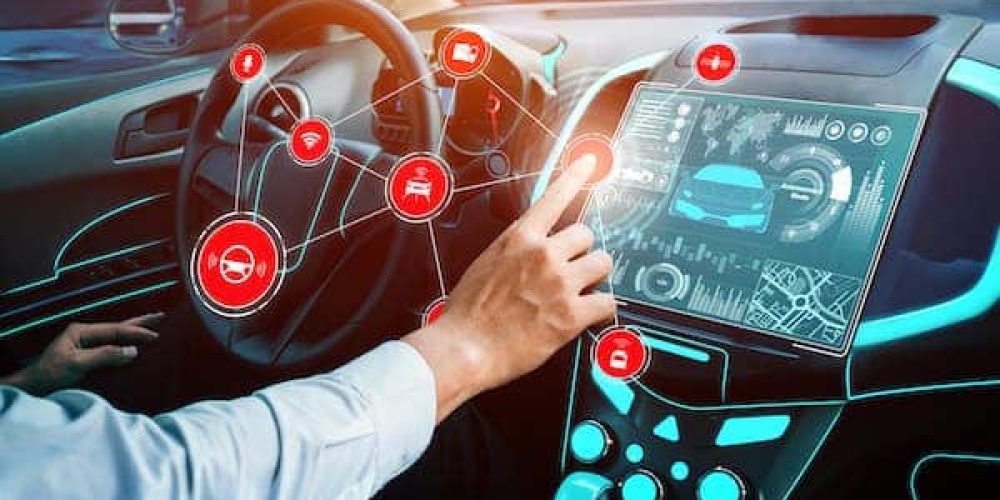As our world becomes increasingly digitized, cars are becoming more like computers on wheels, with an ever-increasing amount of data collected and processed by onboard computers. However, fully autonomous driving is still a thing of the future. So, what’s holding advanced driver-assistance systems (ADAS) back?
In this blog post, we’ll discuss the current state of ADAS limitations, technology, and the factors that currently affect it.
ADAS System Accuracy and Inconsistency
There are many different types of ADAS systems on the market. They vary from automaker to automaker, model to model, and year to year. On top of that, as they are now, ADAS may not always work correctly. An example of ADAS limitations is its systems may have difficulty functioning in low-light or inclement weather conditions. These conditions can make it difficult for sensors to detect and track objects accurately, leading to false alarms or even missed warnings. Thus, drivers should always be prepared to control the vehicle if necessary.
Read about why ADAS doesn’t mean autonomous/self-driving vehicles: ADAS vs Autonomous Driving: What is the Role of ADAS in Autonomous Driving?
As mentioned, not every ADAS system requires the same calibration techniques. The type of system, the make and model of the vehicle, and even the year it was manufactured can all play a role in determining the best calibration method.
Drivers also need to consider that not only are they based on different technologies, but some work better than others. Another example of ADAS limitations is its lane departure warning systems may be more accurate in some vehicles than others. The tech has been on the market in different iterations and different technologies, which are being refined by company research and development R&D departments for the next available model year. As with any computer-based system, ADAS features are subject to errors. Therefore, drivers need to be aware of the accuracy levels of different ADAS capabilities in their vehicles to use them appropriately. To aid in this is the SAE.
Sensor Limitations
ADAS sensors are vital components of every ADAS feature. ADAS sensors (including LiDAR, radar, and camera sensors) must accurately detect and track objects to properly handle traffic safety tasks. However, current sensor technology is far from perfect. Sensors are another example of ADAS limitations as they can have difficulty detecting small or fast-moving objects. In addition, they can be thrown off by inclement weather. In addition, they can be easily confused by objects like debris or animals. Likewise, they can be thrown off by dirt, snow, fog, accidents and modifications to the vehicle.

Each ADAS sensor plays a critical role in the functioning of a driver assistance system. But, sensors can be expensive and need to be calibrated when they are moved out of the factory-set position.
Processor Limitations
Another critical element of ADAS technology is the processor. This is what takes all the data collected by sensors and turns it into information that the system can use. When it comes to ADAS limitations, processors can be finicky, and even a small error can cause major problems.
A processor may misinterpret data from a sensor or be unable to keep up with the high volume of data. Therefore, automakers typically use high-quality processors that can handle the large amount of data generated by ADAS features.
ADAS Software Algorithm Limitations
No software system is perfect, and ADAS features are no exception. These systems rely on algorithms, or sets of rules, to function. However, these algorithms are often complex and can be challenging when it comes to ADAS limitations. Even a small error in an algorithm can cause significant problems with an ADAS system. Moreover, every automaker has its way of coding algorithms, often making it challenging to compare systems.
GPS and Mapping Limitations
GPS systems are another vital component of many ADAS features. They provide the electronic control unit (ECU) with information about the vehicle’s current location so it can make decisions accordingly. But, GPS systems can be inaccurate and can’t always keep up with the constantly changing landscape. This can lead to problems with features like adaptive cruise control (ACC) and automated parking.
In addition, GPS systems rely on mapping data to function. This data must be constantly updated to reflect changes in the roadways. However, this process can be costly and time-consuming. As a result, many automakers choose only to update their mapping data every few years, which can lead to outdated information.

Driver Over-Reliance on ADAS
One of the dangers of ADAS technology is that it can lead to driver overreliance. The confusion between automated driving and autonomous vehicles has led many drivers to believe that their car can drive itself. Realistically, these systems are designed to assist drivers, not replace them. Some drivers may become too reliant on these safety systems and features and stop paying attention to the road. This can be especially dangerous in emergencies.
For example, if a driver relies on adaptive cruise control to maintain a safe following distance and another car cuts them off, there might not be enough time to react. This could lead to an accident. Likewise, if a driver relies on automated parking assistance features and the system fails to detect an object in the way, the car could be damaged. To avoid these dangers, it is vital for drivers to understand the limitations of ADAS and always to stay alert when behind the wheel.
While ADAS features can offer a significant safety boost, they need to be appropriately calibrated to function correctly. As the ADAS safety market grows, so does the demand for professional calibration services. Learn about opening a calibration center with Car ADAS Solutions today.
Read more: Getting Started in ADAS Business
Read more: Is Your Auto Shop Prepared for ADAS?







